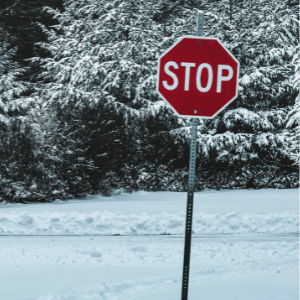What Is Skier’s Toe? And The Treatment To Fix It
by Frank V. Persall
While skiing is truly an exciting sport, it isn’t without its dangers. Some are more serious than others but you’ll find that if you ski regularly, your body, particularly your feet, may begin to suffer. One of the most common skiing injuries is a skier’s toe; but what is skier’s toe and how can you treat it?
Skier’s toe is an injury that occurs typically to the big toenail. Since there is a constant pressure put on the nail of the big toe from your ski boots, this causes repetitive trauma on the nail bed to begin bleeding. As a result of this, the area will turn black. In medical terms, the condition is known as subungual hematoma.
Fortunately, skier’s toe isn’t usually a serious injury and can be easily treated. Let’s take a closer look at subungual hematoma, what can be done about it, and how you can prevent it from happening in the future.
Contents

Help! My Big Toe Turned Black!
When you’ve come off the slopes and notice that the underside of your big toenail has gone a worrying shade of black it can be easy to start fretting about things like frostbite. But to put your mind at ease, the chances are that if the blackness is under the nail, it’s been caused by subungual hematoma; or skier’s toe.
The pressure on the toes from your ski boots is usually caused by the boots not fitting correctly. If they are too small, this causes the toes to push against the front of the boot whereas boots that are too big won’t fully support the feet. As a result of this, the feet will move back and forth inside the boot which makes the toe bang repeated against the front.
Once the bleeding begins, this will stain the nail material, known as keratin, leaving that classic black mark. Over time, this will dissipate and the only time that this is a more concerning injury is if the blood pools causing pain.
How Do You Treat Skier’s Toe?

While skier’s toe can look quite concerning, it isn’t usually a serious injury. However, it is a wise idea to seek medical advice as soon as possible so that your physician can decide on the best course of action.
In less severe cases, you may be advised to do nothing. This usually applies if the blackness does not cover more than 50% of the nail or you are not in pain. If the blackness is severe and causes you discomfort, the subungual hematoma will need to be drained. This sounds like a nasty procedure but in reality, it is very simple, quick, and often painless.
When you go to see your medical practitioner, they will drill a hole in the toenail using either a sterile needle or a heated sharp implement. This allows the blood to drain and the pressure to be released. It is this pressure that can cause pain so as soon as it is released, you will notice a reduction in your discomfort.
Quick Note
It is important not to attempt to drain this type of injury yourself as the equipment you use may not be completely sterile. Furthermore, you may not drain the injury sufficiently which could do more harm than good. There are reports from doctors who have talked about patients watching online tutorials on how to drain a toe. Unfortunately, these videos can be pretty gruesome and patients have been known to faint. Off the back of this, you may fall into something and cause yourself further injuries. In short, it simply isn’t worth it.
If your doctor isn’t going to drain the injury, it is still important to take good care of yourself at home. To relieve the pressure in the foot, you can sit with the foot and ankle elevated and you may wish to apply an ice pack to further reduce pressure and swelling.
It can also be a good idea to wrap the affected toe in a bandage in order to compress it and stop any further bleeding. In case you are experiencing any pain, we would advise taking over the counter medication to soothe this. However, if the pain becomes too much, then your doctor may be able to prescribe you some stronger medication.
Can You Ski With Skier’s Toe?
If you have had the toe drained, then there is a chance that the nail may fall off in the days that follow the procedure. It could take up to eight weeks before the new nail grows back and the area may feel a little delicate. If you haven’t had the toe drained, and it remains black, it will stay this way until your new nail grows through which could take up to a year.
Provided that you are not in pain, there should be no reason that you cannot carry on enjoying your day to day activities, including skiing. However, should the toenail become inflamed, painful, or any other problems occur, you should speak to your doctor who will be able to provide you with personalized information on whether you should rest or remain active.
How Do You Stop Skiing Toes?
One of the best and simplest ways to avoid getting skier’s toe is to always make sure that your skiing boots fit correctly. When choosing boots, get properly measured and never be tempted to stuff your feet into someone else’s boots; even if it’s just for one skiing trip.
A lot of people think that it is only the boots that are to blame but if your socks crumple up inside them, this can also put unnecessary pressure on the feet. For this reason, always make sure that your socks are well-fitting too.

We all have different shaped feet and some people may suffer with things like bunions which cause bony protrusions at the sides of the feet, near the toes. In this case, you will need to find boots with a wider toe box to accommodate this. Not doing so will almost certainly make the boots too tight which could lead to skier’s toe.
When you are skiing, always try to lean into your boots so that the shins remain against the boot. This will prevent the feet from being forced to the front of the boot and help to avoid the dreaded toe bang.
Summary
Skier’s toe is a common injury experienced by many people after a day on the slopes. It is usually nothing to worry about and while it may need medical treatment if it is causing you pain, for the most part, it will clear up by itself. When pressure is put on the toes from your skiing boots, this can lead to bleeding under the nail bed which in turn will stain the keratin, leaving a black mark. But trust us, it looks worse than it is.
The best way to avoid getting skier’s toe is to ensure that you have ski boots that fit perfectly. It is better to go and have your boots correctly fitted than to be taken off your feet because of an injury that could have been avoided.
Once you are over your injury and are ready to get back on the slopes, there may be a world of questions nagging at your brain. For more skiing information and tips, check out our skiing pages, where you will find everything you need whether you’re a beginner or have been skiing for many years.
Related Posts:
 |
 |
 |
 |

About Frank V. Persall
Frank is originally from the UK, but he has a passion for skiing that knows no bounds. He has made it his life's mission to visit the best ski resorts across the USA and the World. Frank loves spending time with his wife and three children on ski slopes, as they all share his love for the activity.
Thoughts on "What Is Skier’s Toe? And The Treatment To Fix It"
 |
 |
 |
 |
You can get FREE Gifts. Or latest free skiing books here.
Disable Ad block to reveal all the info. Once done, hit a button below
 |
 |
 |
 |